Central Park Five: The true story behind When They See Us
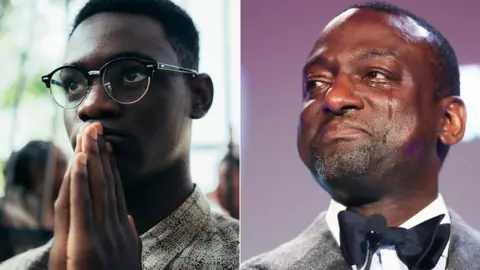 Atsushi Nishijima/Netflix/Getty
Atsushi Nishijima/Netflix/GettyOne spring evening in 1989, a group of around 30 teenagers were hanging out in Central Park, New York.
Some of them were causing serious trouble - including badly hurting others in the park and harassing homeless people.
The same night, a 28-year-old white woman, Trisha Meili, had been out jogging in the park.
She was found beaten and raped and was in a coma for 12 days - and in that time, the case of the Central Park Jogger would grip New York City.
Five black and Hispanic boys, aged between 14 and 16, would be found guilty and jailed for the crime.
They became known as the Central Park Five.
But they never committed the crime.
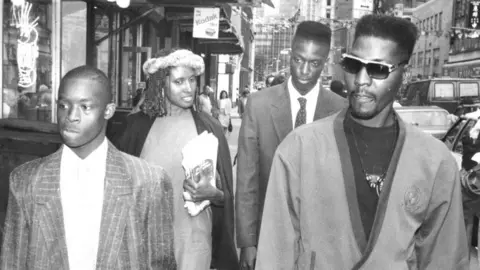 Getty Images
Getty ImagesThe Central Park Five were Kevin Richardson, 14, Raymond Santana, 14, Antron McCray, 15, Yusef Salaam, 15, and 16-year-old Korey Wise.
Richardson and Santana were the first to be taken in by police, on reports of intimidating behaviour and muggings.
McCray, Salaam and Wise were taken in the following day - Wise wasn't considered a suspect at the time but wanted to offer moral support to Salaam.
Focus soon shifted to the jogger Trisha Meili, and the five boys were interrogated for at least seven hours without their parents, before four made video-taped confessions to detectives.
All admitted they touched or restrained Meili while one or more of the others assaulted her.
 Atsushi Nishijima/Netflix
Atsushi Nishijima/NetflixAs the DNA evidence from semen found at the scene didn't match any of the five boys, prosecutors relied solely on the initial interrogations.
But the Five took back those statements - saying they'd been coerced by police into giving false confessions.
In a 2016 interview with the Guardian, Salaam said: "I would hear them beating up Korey Wise in the next room.
"They would come and look at me and say: 'You realise you're next'.
"The fear made me feel really like I was not going to be able to make it out".
After two trials, the five teenagers were found guilty of offences including attempted murder, rape, assault and robbery, and were convicted to six to 13 years in prison.
The role of Donald Trump
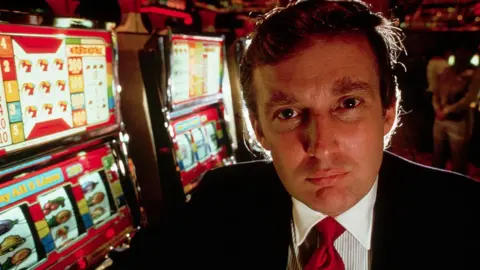 Getty Images
Getty ImagesNew York in the 80s and 90s was much more dangerous than it is today.
Race relations were strained - especially when it came to the police.
Meanwhile, Donald Trump - then a New York property mogul - seemed convinced the teens were guilty.
He spent a reported $85,000 (around £138,000 today) on four full-page adverts in New York newspapers titled: "Bring Back The Death Penalty, Bring Back Our Police!".
He wrote: "I want to hate these murderers and I always will. I am not looking to psychoanalyse or understand them, I am looking to punish them."
In an interview with CNN at the time, he said: "Maybe hate is what we need if we're gonna get something done."
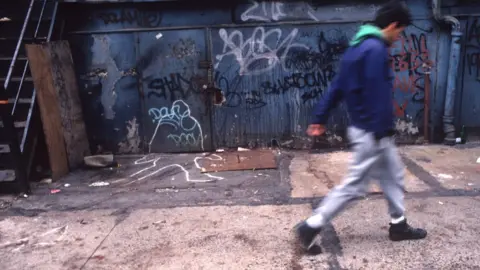 Getty Images
Getty ImagesIt seemed to feed into the atmosphere of high crime rates and poor race relations in the city at the time.
Talking about the adverts, Salaam later told the Guardian: "We were all afraid. Our families were afraid. Our loved ones were afraid. For us to walk around as if we had a target on our backs.
"Had this been the 1950s, that sick type of justice that they wanted - somebody from that darker place of society would have most certainly came to our homes, dragged us from our beds and hung us from trees in Central Park."
The real criminal
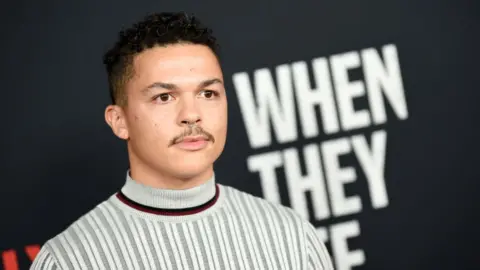 Getty Images
Getty ImagesMatias Reyes had been convicted of a string of rapes and a murder and was in prison.
He'd come across one of the Central Park Five, Korey Wise, twice during imprisonment.
In 2002, a year after his second meeting, Reyes told the police he was the one who'd attacked and sexually assaulted Meili when he was 17 - and said he'd acted alone.
He was able to tell police details about the attack that wasn't public knowledge and his DNA matched that at the scene of the crime.
One of the crimes he'd been found guilty of was another rape two days before the Meili incident - but he was never a suspect in the Central Park Jogger case.
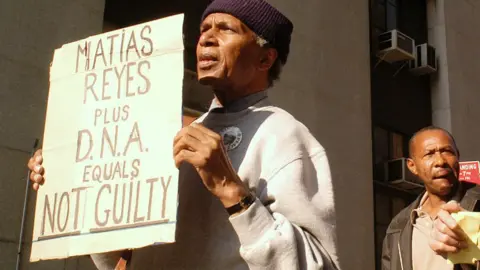 Getty Images
Getty ImagesReyes later said: "I know it's hard for people to understand, after 12 years, why a person would actually come forward to take responsibility for a crime.
"At first I was afraid, but at the end of the day, I felt it was definitely the right thing to do."
Eventually, the five men were cleared of all charges having almost served their full sentences.
Reyes was never prosecuted for the crimes the Five were accused of as the statute of limitations had passed.
He remains in prison on a life sentence although has a parole hearing scheduled for 2022.
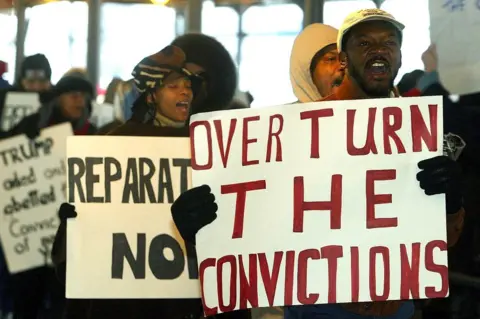 Getty Images
Getty ImagesOn their release, the Five filed a civil suit against New York City and received $41m in the settlement (about £45.5m today).
Korey Wise received the biggest share of $12m because he was the only one who'd been sentenced as an adult and so spent the longest time in prison.
Speaking in a 2012 documentary about the case, he said: "You can forgive but you won't forget. You won't forget what you lost.
"No money could bring that time back. No money could bring the life that was missing or the time that was taken away."
What has happened now?
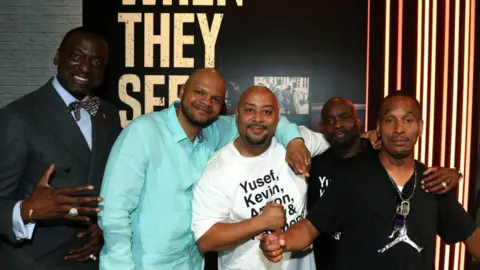 Getty Images
Getty ImagesThe Five are now in their 40s. Most of them have moved away from New York.
Salaam said: "I look at Donald Trump, and I understand him as a representation of a symptom of America.
"We were convicted because of the colour of our skin. People thought the worst of us.
"And this is all because of prominent New Yorkers - especially Donald Trump."
 Getty Images
Getty ImagesOn the presidential campaign trail in 2016, Mr Trump was asked by CNN about the ads he took out about the Central Park Five.
"They admitted they were guilty. The police doing the original investigation say they were guilty," he said.
"The fact that that case was settled with so much evidence against them is outrageous."
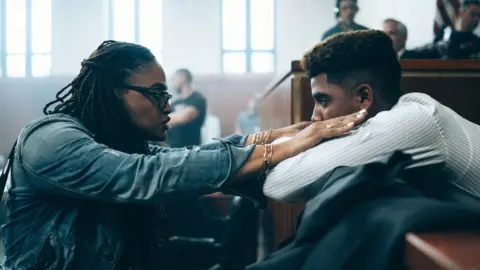 Atsushi Nishijima/Netflix
Atsushi Nishijima/NetflixNow, the story has been turned into a four-part Netflix drama called When They See Us.
It's written and directed by Ava DuVernay, who directed Disney's A Wrinkle In Time.
She's also made films such as Selma, based on Martin Luther King Jr, and 13th, a documentary about the US prison system.
What has the reaction been?
When They See Us has introduced the story of the Central Park Five to a new audience - but even for those who already knew about it, the consensus is that it makes for a difficult watch.
Allow X content?
Allow X content?
It's left viewers angry.
Allow X content?
And even though people have struggled through it, it's being recommended as an important story to know about.
Allow X content?
The jogger
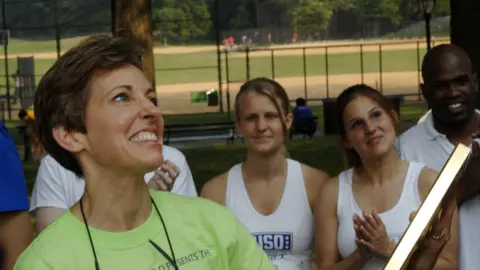 Getty Images
Getty ImagesThe identity of the Central Park Jogger was kept secret throughout the trial.
In 2003, 14 years after the attack, Trisha Meili came forward and confirmed she was the victim in a book called I Am The Central Park Jogger.
She was in a coma for 12 days after the attack and, when she woke up, she did not remember any details of it.
Soon after the attack she quit her job as an investment banker to work with survivors of sexual assault.
She still has some scarring from the attack and lost her sense of smell.
Trish Meili now works as a motivational speaker and she still runs.


